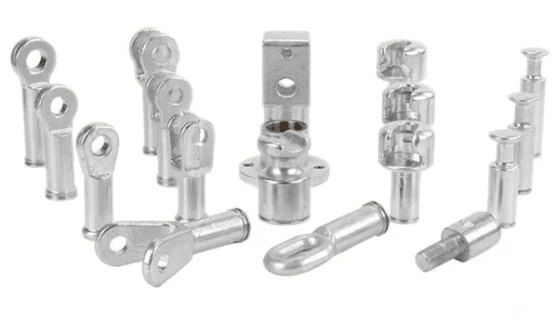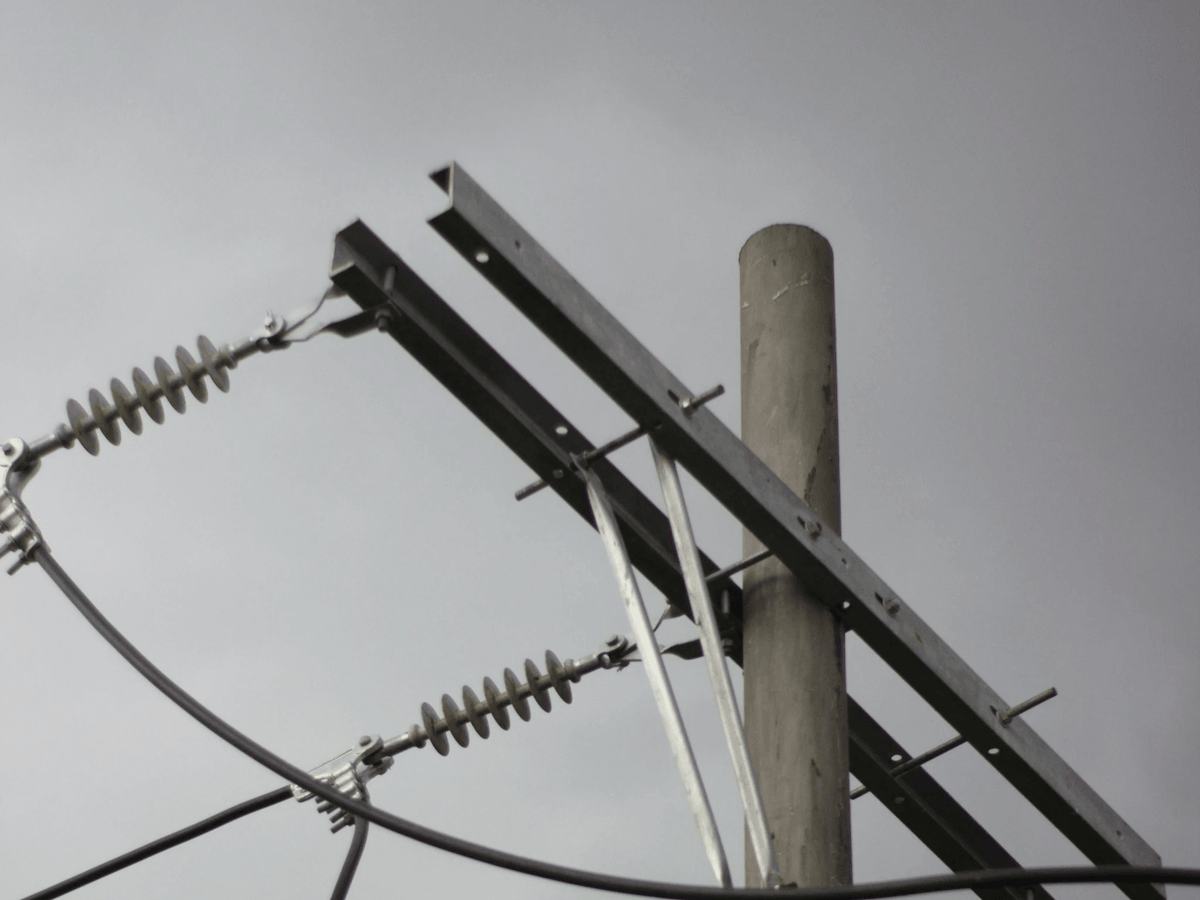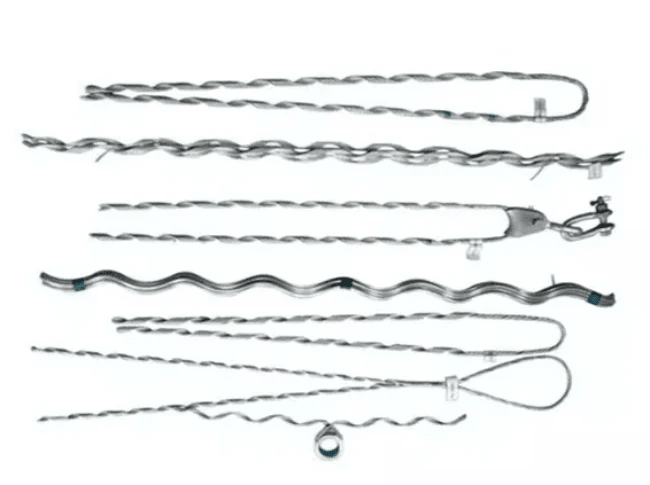Introduction

When it comes to maintaining the integrity of transmission lines, armor rods and line guards play a crucial role. These components provide essential protection to the conductors, ensuring longevity and performance. Choosing the right armor rod material is key in this process, as it directly impacts the effectiveness of the protection provided. Additionally, using armor rods in transmission lines offers a wide range of benefits, making them an indispensable asset in the industry.
Understanding Armor Rods and Line Guards
Armor rods are designed to protect conductors from damage caused by vibration, wind-induced oscillation, and other environmental factors. On the other hand, line guards are used for protecting conductors from abrasion or wear caused by clashing with other objects. While both serve to safeguard transmission lines, they have distinct purposes and applications.
Selecting the right armor rod material is crucial for ensuring the long-term protection of transmission lines. Different environmental factors and operating conditions require different materials to effectively mitigate potential damage. For example, in areas with high wind-induced oscillation, choosing armor rods made from a durable, flexible material is essential. Additionally, considering the conductivity and weight of the material is important to ensure it does not interfere with the performance of the conductors.
The Importance of Choosing the Right Armor Rod Material
Selecting the appropriate armor rod material is crucial for ensuring optimal performance and longevity of transmission lines. Factors such as conductor surface material compatibility and corrosion prevention must be considered when choosing between aluminum wire, galvanized steel wire, or aluminum clad steel wire. Aluminum wire is lightweight and offers excellent conductivity, making it a popular choice for areas with low wind loads. On the other hand, galvanized steel wire provides superior strength and durability, making it ideal for areas prone to extreme weather conditions. Meanwhile, aluminum clad steel wire combines the best of both worlds, offering high strength and corrosion resistance while maintaining excellent conductivity.
Benefits of Using Armor Rods in Transmission Lines
Utilizing armor rods in transmission lines not only protects the conductor from damage and corrosion but also improves the overall reliability of the power grid. By providing a sturdy layer of protection, armor rods ensure that transmission lines can withstand harsh weather conditions and environmental factors, reducing the need for frequent repairs and maintenance. This increased durability ultimately leads to cost savings for utility companies and consumers alike, making it a smart investment in the long run.
What are Armor Rods and Line Guards?

Armor rods and line guards are essential components used in the protection of transmission lines. The primary purpose of armor rods is to provide mechanical protection to the conductor, preventing damage from abrasion, vibration, and other external factors. On the other hand, line guards are used to maintain proper spacing between conductors, ensuring efficient transmission line performance.
Definition and Purpose of Armor Rods and Line Guards
Armor rods are preformed devices made of high-strength materials such as aluminum, galvanized steel, or aluminum clad steel wire. They are wrapped around the conductor in a specific pattern to enhance its durability and longevity. Line guards, on the other hand, are designed to maintain proper phase spacing in overhead power lines, preventing phase-to-phase faults.
Key Differences Between Armor Rods and Line Guards
The main difference between armor rods and line guards lies in their specific functions within a transmission line system. While armor rods provide mechanical protection to the conductor against wear and tear, line guards focus on maintaining proper spacing between conductors to ensure optimal performance and safety.
Armor rods are typically used in areas where the conductor is subject to high mechanical stress, such as in areas with strong winds or extreme weather conditions. Their primary function is to absorb and distribute the mechanical forces exerted on the conductor, thus preventing damage and ensuring the longevity of the transmission line. On the other hand, line guards are essential for maintaining proper clearance between conductors to prevent electrical faults and ensure reliable power transmission. They are often used in areas with heavy foliage or where wildlife poses a risk to the integrity of the transmission line.
Common Applications of Armor Rods and Line Guards
Armor rods find wide applications in overhead power transmission lines where they protect conductors from abrasion caused by wind-induced vibration or galloping motion. They are also commonly used in areas with high levels of pollution or corrosive environments. Line guards are frequently utilized in distribution lines where maintaining proper phase spacing is crucial for reliable power delivery.
In addition to their use in overhead power transmission lines, armor rods are also employed in areas prone to extreme weather conditions such as hurricanes and ice storms. The added protection provided by armor rods helps prevent damage to the conductors, ensuring uninterrupted power supply during inclement weather. Furthermore, armor rods are often used in areas with dense vegetation, where the risk of branches coming into contact with the conductors is high, offering an extra layer of defense against potential damage.
Choosing the Right Armor Rod Material

When it comes to choosing the right armor rod material, there are several options to consider. Aluminum wire, galvanized steel wire, and aluminum clad steel wire are the most common choices for armor rods. Each material has its own unique properties and benefits, making it important to carefully evaluate which one is best suited for your specific transmission line needs.
Aluminum Wire vs. Galvanized Steel Wire vs. Aluminum Clad Steel Wire
Aluminum wire is lightweight and corrosion-resistant, making it a popular choice for armor rods in transmission lines. Galvanized steel wire offers excellent strength and durability, while aluminum clad steel wire combines the best of both worlds by providing strength and corrosion resistance. Understanding the differences between these materials is crucial in selecting the most suitable armor rod for your application.
When selecting armor rod material, it's important to consider the environmental conditions in which the wire will be used. For example, if the transmission lines are located in a coastal area with high levels of salt in the air, corrosion resistance becomes a critical factor. In this case, aluminum clad steel wire may be the best choice due to its ability to withstand corrosion while also providing strength.
Factors to Consider When Selecting Armor Rod Material
When selecting armor rod material, it's important to consider factors such as environmental conditions, conductor type, and expected loads on the transmission line. The right material should be able to withstand these conditions while providing optimal protection for the conductor surface. Additionally, factors such as cost and availability should also be taken into account when making a decision.
Impact of Armor Rod Material on Conductor Surface
The choice of armor rod material can have a direct impact on the conductor surface. Using an incompatible material can lead to corrosion or other forms of damage over time, potentially compromising the integrity of the transmission line. By selecting an appropriate armor rod material that is compatible with the conductor surface, you can ensure long-term reliability and performance.
By understanding the key differences between aluminum wire, galvanized steel wire, and aluminum clad steel wire when choosing armor rods for transmission lines, you can make an informed decision that aligns with your specific needs and requirements.
Color Coding and Installation of Armor Rods

Armor rods are an essential component in the maintenance and protection of transmission lines. They are used to prevent damage to the conductor caused by vibration, wind, and other environmental factors. When it comes to identifying the size of the conductor easily, color coding plays a significant role in ensuring that the right armor rod is used for the specific application.
Significance of Color Coding in Armor Rods
Color coding is crucial in distinguishing between various sizes of armor rods. It helps in quickly identifying which armor rod is suitable for a particular type of conductor, making installation more efficient and accurate. This system simplifies the process for technicians and ensures that the right armor rods are used for each specific application.
In addition to aiding in the quick identification of suitable armor rods, color coding also plays a crucial role in enhancing safety during installation. By clearly differentiating between sizes and types of armor rods, the risk of using the wrong rod for a particular conductor is significantly reduced. This helps prevent potential damage to the conductor and ensures that the installation process is carried out with precision and accuracy. Ultimately, proper color coding contributes to a safer working environment for technicians and reduces the likelihood of errors during installation.
Importance of Proper Installation of Armor Rods
Proper installation of armor rods is vital to their effectiveness in protecting transmission lines. The correct placement and secure attachment of armor rods help to ensure that they provide maximum support to the conductor, preventing damage from vibration and other stressors. By following manufacturer guidelines for installation, technicians can guarantee that armor rods function as intended.
Proper installation of armor rods is not only crucial for the protection of transmission lines, but it also plays a significant role in ensuring the safety of the surrounding environment. When armor rods are installed correctly, they help to minimize the risk of electrical faults and potential hazards, ultimately contributing to a more secure and reliable power distribution system. Additionally, following manufacturer guidelines for installation not only guarantees optimal performance but also extends the lifespan of armor rods, reducing maintenance costs in the long run.
Role of Spark Fittings in Customizing Armor Rods
Spark Fittings plays a crucial role in customizing armor rods to meet specific requirements. They offer tailored solutions for different types of conductors, ensuring that armor rods are perfectly suited to their intended applications. This customization enhances the performance and longevity of transmission lines, providing added protection against wear and tear.
Furthermore, by customizing armor rods with spark fittings, transmission lines are better equipped to handle extreme weather conditions such as high winds and heavy snow. This added protection ensures that the conductors remain intact and functional even in the harshest of environments, reducing the risk of power outages and interruptions. As a result, utility companies can provide more reliable service to their customers, ultimately improving customer satisfaction.
Benefits of Using Armor Rods in Transmission Lines

Enhancing Conductor Longevity and Performance
Armor rods play a crucial role in enhancing the longevity and performance of transmission lines. By providing a protective layer around the conductor, armor rods minimize wear and tear caused by environmental factors such as wind, ice, and UV radiation. This helps to maintain the structural integrity of the transmission line, ensuring smooth and efficient power transmission.
Preventing Damage and Corrosion
One of the key benefits of using armor rods in transmission lines is their ability to prevent damage and corrosion. The armor rod material acts as a barrier against moisture, preventing it from reaching the conductor surface and causing corrosion. Additionally, armor rods protect the conductor from abrasion and mechanical damage, reducing the risk of costly repairs or replacements.
Cost-Effectiveness and Energy Efficiency
In addition to enhancing longevity and preventing damage, armor rods contribute to cost-effectiveness and energy efficiency in transmission lines. By minimizing wear and tear on the conductor, armor rods reduce maintenance costs and extend the overall lifespan of the transmission line. This results in improved energy efficiency, as well-maintained transmission lines are able to transmit power more effectively with minimal loss.
Spark Fittings provides customized solutions for armor rod installation based on specific requirements such as conductor material and size. With their expertise in preformed armor rod manufacturing production line equipment, Spark Fittings ensures that each installation is tailored to optimize protection for transmission lines.
Conclusion

Making Informed Choices for Armor Rod Material
When selecting armor rods for transmission lines, it is crucial to consider the conductor's raw material and choose an armor rod material that is similar to it to prevent corrosion. Whether it's aluminum wire, galvanized steel wire, or aluminum clad steel wire, the right choice can significantly impact the longevity and performance of the transmission line.
Ensuring Proper Installation of Armor Rods
Proper installation of armor rods is essential for their effectiveness in protecting transmission lines. The color code on armor rods helps identify conductor size during installation, ensuring that they are placed correctly. It's important to follow manufacturer guidelines and seek professional help if needed to ensure proper installation.
The Role of Spark Fittings in Customizing Armor Rods
Spark Fittings plays a crucial role in customizing armor rods according to specific requirements. By offering tailored solutions for different conductor materials and sizes, Spark Fittings ensures that the armor rods effectively protect transmission lines from damage and corrosion.

